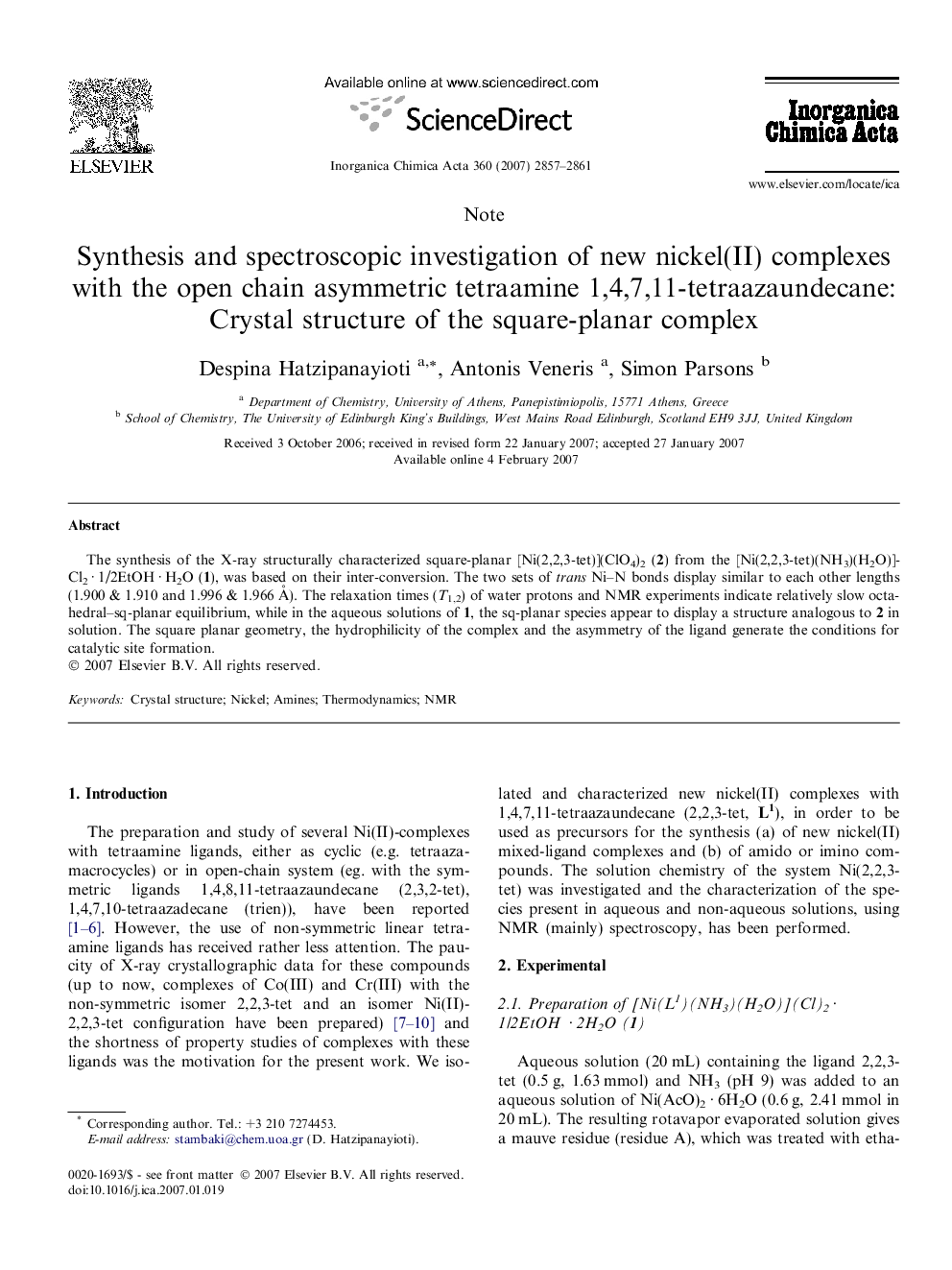| Article ID | Journal | Published Year | Pages | File Type |
|---|---|---|---|---|
| 1309668 | Inorganica Chimica Acta | 2007 | 5 Pages |
The synthesis of the X-ray structurally characterized square-planar [Ni(2,2,3-tet)](ClO4)2 (2) from the [Ni(2,2,3-tet)(NH3)(H2O)]Cl2 · 1/2EtOH · H2O (1), was based on their inter-conversion. The two sets of trans Ni–N bonds display similar to each other lengths (1.900 & 1.910 and 1.996 & 1.966 Å). The relaxation times (T1,2) of water protons and NMR experiments indicate relatively slow octahedral–sq-planar equilibrium, while in the aqueous solutions of 1, the sq-planar species appear to display a structure analogous to 2 in solution. The square planar geometry, the hydrophilicity of the complex and the asymmetry of the ligand generate the conditions for catalytic site formation.
Graphical abstractThe X-ray crystal structure of the square-planar [Ni(2,2,3-tet)](ClO4)2 (2) has been determined. Both complex 2 and the octahedral complex [Ni(2,2,3-tet)(NH3)(H2O)]Cl2 · 1/2EtOH · H2O (1) have been characterized by analytical and spectroscopic methods. The two sets of trans Ni–N bonds display lengthy which are similar to each other lengths. The relaxation times (T1,2) of water protons and NMR experiments indicate relatively slow octahedral–sq-planar equilibrium.Figure optionsDownload full-size imageDownload as PowerPoint slide
